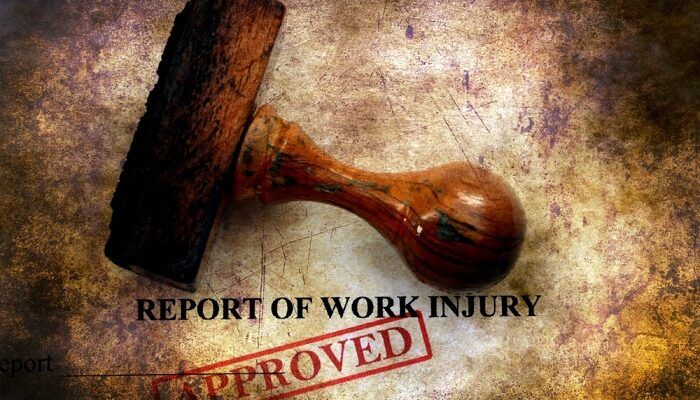In Workers’ Compensation, Doctors and Medical Evaluators, in order to address matters of disability and impairment, frequently use testing. Testing can be in the form of self-reporting questionnaires filled out by Injured Workers.
Many Injured Workers have injuries to their lower extremities. Lower extremity injuries can include the hips, knees, ankles and feet.
This article will describe the Lower Extremity Functional Scale (LEFS), what the questions are asked, how it is scored, and what it means to an Injured Worker.
What is the Lower Extremity Functional Scale?
“The Lower Extremity Functional Scale (LEFS) is a questionnaire containing 20 questions about a person’s ability to perform everyday tasks.” Honorhealth.com
What is the Purpose of the LEFS?
“The LEFS can be used by clinicians as a measure of patients’ initial function, ongoing progress and outcome, as well as to set functional goals. The LEFS can be used to evaluate the functional impairment of a patient with a disorder of one or both lower extremities. It can be used to monitor the patient over time and to evaluate the effectiveness of an intervention.” Honorhealth.com
How Are You to Answer the Questions?
When provided the LEFS, there is language on the form. It provides as follows: “We are interested in knowing whether you are having any difficulty at all with the activities listed below because of your lower limb problem for which you are currently seeking attention. Please provide an answer for each activity.” Honorhealth.com
“Today, do you or would you have any difficulty at all with:”
What Are the Activities That Are to Be Assessed?
There are twenty activities that are to be addressed within the LEFS:
Usual work, housework or school activities
Usual hobbies, recreational or sporting activities.
Walking between rooms
Getting into or out of the bath
Walking between rooms
Putting on shoes or socks
Squatting
Lifting an object, like a bag of groceries from the floor
Performing light activities around a home
Performing heavy activities around a home
Getting into or out of a car
Walking 2 blocks
Walking a mile.
Going up or down 10 stairs (about 1 flight of stairs)
Standing for 1 hour
Sitting for 1 hour
Running on even ground
Running on uneven ground
Making sharp turns while running fast
Hopping
Rolling over in bed
How Are the Questions Answered?
The questions are answered with respect to a level of difficulty. The levels of difficulty are as follows: extreme difficulty or inability to perform activity, quite a bit of difficulty, moderate difficulty, a little bit of difficulty, and no difficulty.
How Is It Scored?
Each level of difficulty is assigned a number from 0 to 4. The range being from “O” for being extreme difficulty or inability to perform to “4” being able to perform with no difficulty.
Extreme Difficulty or Unable to Perform Activity (0)
Quite a Bit of Difficulty (1)
Moderate Difficulty (2)
A Little Bit of Difficulty (3)
No difficulty (4)
What Is the Total Score?
The total score can range from 0 to 80. The lower the score implies the greater the disability.
How Can This Scale Be Used in Workers’ Compensation?
In California, the American Medical Association Guides to the Evaluation of Permanent Impairment, 5th Edition, employs the use of “activities of daily living” (ADL) to address impairment. “Activities of daily living” include the following items
Per the AMA Guides 5th Edition, Table 1-2, See Page 599, the following are the definitions of each ADL. These ADLs include standing, sitting, walking, climbing stairs, lifting, dressing oneself and bathing.
Thus, the LEFS may assist doctors and examiners as to the nature and extent of the injury’s impact on the ADLs. The ADL assessment can impact the assignment of the permanent impairment number.
Are There Any Concerns with Respect to LEFS?
The LEFS presents problems with respect to workers’ compensation.
First, the scale is to be filled out with respect to the individual’s perception as of the day of the evaluation. Thus, if someone’s condition gets worse during the day from prolonged weight bearing, their answer in the morning may be different from that in the afternoon. Likewise, there is the issue of the Injured Worker having good days versus bad days. Further, there is the issue of whether the assessment is made with respect to one being medicated or not. For example, an Injured Worker may be able to perform well on activities while on narcotics but have problems without.
Second, the scale may be used for credibility issues. Since the scale documents activities on a particular day, contemporaneous sub rosa film may show the Injured Worker performing activities either consistent or inconsistent with their answers.
Third, the scale asks a “would” question concerning the activities. To some extent, the Injured Worker is being asked to speculate as to their ability to perform certain functions. In workers’ compensation, speculation cannot be used as a basis for an award and is therefore problematic.
What If I Need Advice?
If you would like a free consultation regarding workers’ compensation, please contact the Law Offices of Edward J. Singer, a Professional Law Corporation. We have been helping people in Central and Southern California deal with their workers’ compensation cases for over 28 years. Contact us today for more information.




